External links
- Museo Galileo - Istituto e Museo di Storia della Scienza (Florence, Italy)
Paolo Galluzzi (born 1942, Florence, Italy) is an Italian historian of science.
He has been director of the Museo Galileo – Istituto e Museo di Storia della Scienza in Florence, Italy since 1982. He held the chair of History of Science at the University of Siena from 1979 to 1994, then at the University of Florence from 1994 to 2010. He was editor-in-chief of Nuncius, an international journal for the history of science, from 1991 until 2007. He presently sits on the scientific boards of important journals and cultural institutions in Italy and abroad. He was assigned chairman of the International Scientific Committee by the Nobel Foundation to create the Nobel Museum in Stockholm. He currently chairs the Advisory Boards of the National Edition of Leonardo da Vinci’s Manuscripts and Drawings and of the Updates to the National Edition of Galileo Galilei’s Work. He is a member of the Royal Swedish Academy of Sciences, the American Philosophical Society [1] and the Accademia Nazionale dei Lincei. His research is focused on the following topics: Leonardo da Vinci, Renaissance scientists and engineers, Galileo and his School, European scientific academies, history of scientific instruments, museums and scientific collecting, historiography of science, and the history of scientific research in post-Unification Italy. He has also developed many plans for research organization and dissemination of scientific culture. He conceived a number of historical scientific exhibitions [2] which have been displayed in Italy and abroad, as well as information systems and multimedia on the history of science and technology.
He is the author of many works on the topics dealt with in his research. [3] Among the most recently published books: Tra atomi e indivisibili. La materia ambigua di Galileo, Firenze, Olschki, 2011, ISBN 9788822260888, and «Libertà di filosofare in naturalibus». I mondi paralleli di Cesi e Galileo, Roma, Accademia Nazionale dei Lincei, 2014, ISBN 9788821810923. He was director of the Storia della Scienza published by Einaudi and of the “Biblioteca della Scienza Italiana” series. He also edited the catalogues of the exhibitions he conceived.
The Accademia dei Lincei is one of the oldest and most prestigious European scientific institutions, located at the Palazzo Corsini on the Via della Lungara in Rome, Italy.
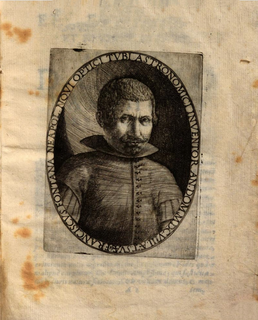
Francesco Fontana was an Italian lawyer and an astronomer.
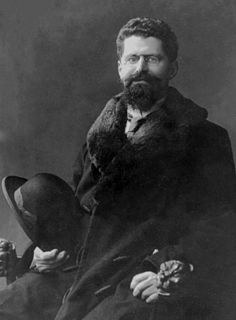
Francesco Severi was an Italian mathematician. He was the chair of the committee on Fields Medal on 1936, at the first delivery.

Museo Galileo, the former Istituto e Museo di Storia della Scienza is located in Florence, Italy, in Piazza dei Giudici, along the River Arno and close to the Uffizi Gallery. The museum, dedicated to astronomer and scientist Galileo Galilei, is housed in Palazzo Castellani, an 11th-century building which was then known as the Castello d’Altafronte.
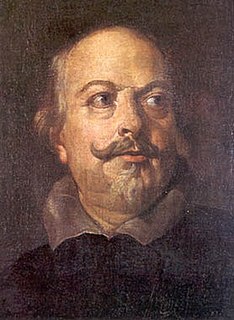
Cassiano dal Pozzo was an Italian scholar and patron of arts. The secretary of Cardinal Francesco Barberini, he was an antiquary in the classicizing circle of Rome, and a long-term friend and patron of Nicolas Poussin, whom he supported from his earliest arrival in Rome: Poussin in a letter declared that he was "a disciple of the house and the museum of cavaliere dal Pozzo." A doctor with interests in the proto-science of alchemy, a correspondent of major figures like Galileo, a collector of books and master drawings, dal Pozzo was a node in the network of European scientific figures.

Prince Baldassarre Boncompagni-Ludovisi, was an Italian historian of mathematics and aristocrat.
Mauro Picone was an Italian mathematician. He is known for the Picone identity, the Sturm-Picone comparison theorem and being the founder of the Istituto per le Applicazioni del Calcolo, presently named after him, the first applied mathematics institute ever founded. He was also an outstanding teacher of mathematical analysis: some of the best Italian mathematicians were among his pupils.

Gaetano Fichera was an Italian mathematician, working in mathematical analysis, linear elasticity, partial differential equations and several complex variables. He was born in Acireale, and died in Rome.

Luca Valerio (1553–1618) was an Italian mathematician. He developed ways to find volumes and centers of gravity of solid bodies using the methods of Archimedes. He corresponded with Galileo Galilei and was a member of the Accademia dei Lincei.
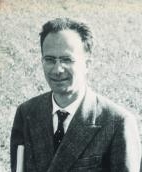
Guido Zappa was an Italian mathematician and a noted group theorist: his other main research interests were geometry and also the history of mathematics. Zappa was particularly known for some examples of algebraic curves that strongly influenced the ideas of Francesco Severi.

Gianfelice Rocca is an Italian billionaire businessman. He is chairman of the Techint Group and Istituto Clinico Humanitas.

Fabio Colonna was an Italian naturalist and botanist.
Alessandro Vezzosi is an Italian art critic, Leonardo scholar, artist, expert on interdisciplinary studies and creative museology, he is also the author of hundreds of exhibits, publications and conferences, in Italy and abroad on Leonardo da Vinci and the Renaissance, contemporary art and design. Amongst others, he was the first scholar from the Armand Hammer Centre for Leonardo Studies from the University of California in Los Angeles (1981), directed by Carlo Pedretti; he taught at the University of Progetto in Reggio Emilia; and he is honorary professor at the Accademia delle Arti del Disegno of Florence. He began as an artist from 1964 to 1971 winning more than 80 prizes in painting competitions. In the Seventies he was the founder of the “Archivio Leonardisimi” and of Strumenti-Memoria del Territorio; he coordinated "ArteCronaca", he was the historical-artistic consultant of the Municipality of Vinci and he collaborated on the publications on Tuscany and Leonardo, modern and contemporary art. In 1980 he curated the Centro di Documentazione Arti Visive of the Municipality of Florence.
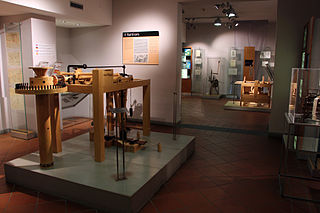
The Museo Ideale Leonardo da Vinci is located in Vinci, Leonardo da Vinci's birthplace, in the province of Florence, Italy. It is part of the Museo leonardiano di Vinci.

Luigi Amerio, was an Italian electrical engineer and mathematician. He is known for his work on almost periodic functions, on Laplace transforms in one and several dimensions, and on the theory of elliptic partial differential equations.
Gianfranco Cimmino was an Italian mathematician, working mathematical analysis, numerical analysis, and theory of elliptic partial differential equations: he is known for being the first mathematician generalizing in a weak sense the notion of boundary value in a boundary value problem, and for doing an influential work in numerical analysis.

The Reale Museo di Fisica e Storia Naturale was an Italian museum founded on 22 February 1775 in Florence that survived until 1878, when its collections were split up in various Florentine museums.

Alessandro Bausani was a scholar of Islam, Arab and Persian studies, interlinguistics and the History of Religion, translating many works into Italian. He was one of the greatest Italian scholars of Islam, as well as a translator and commentator of one of the most important translations of the Qur'an into the Italian language.
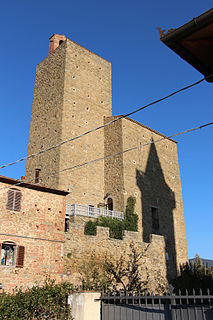
The Museo Leonardiano di Vinci, or Leonardian Museum of Vinci, is a museum dedicated to Leonardo da Vinci, located in Vinci, Leonardo's birthplace, in the province of Florence, Italy.